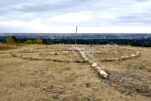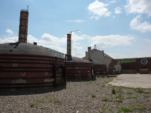Collector’s Corner: Talk to a dealer or collector before getting rid of old bills
By Ron Schmidt on August 3, 2019.
medhatcsc@live.com I’m sure every house has a few old paper bills tucked away, whether it is the old $1, $2 or maybe even the centennial dollar. Unlike coins, when the new paper issues come out the bank automatically takes back all the old ones, and eventually most are taken out of circulation. This does concern me to see all these bills destroyed. Even though they may not be worth anymore than face value, I would rather have people save them and give them to their children or grandchildren. You would be surprised how many teens or people in their early 20s who have come to our shows, have never seen a $1 bill or maybe even the $2 bill. One thing that hardly anyone realizes is that bills are valued on three things: 1) condition, 2) signatures, 3) and serial numbers. Any bill in any year may be one of anywhere between six and 50 varieties of that particular year in that denomination. This of course varies the price for that style, any where from face value to hundreds of dollars. Take for example the 1973 $1 bill, there are 52 different varieties. The least value with the most minted is worth $1 in almost uncirculated (au) condition, to $8,000 for the most scarce bill. The most common question is how much a $1 or $2 bills worth in the latest series. Chances are it is the most common with the greatest number minted making these bills only worth about 5% to 150% above face value, if uncirculated. Once circulated and has even one fold or crease it drops down to face value or maybe 10% over face. Dealers sell these in lots of 5 or 10, in sequential order at about double face value or maybe even less. There are defiantly exceptions to this. These are for the most common ones. Another common question is “I have a centennial bill with no serial number, what is it worth?” In 1967 it was Canada’s 100th birthday and the government wanted everyone to have a memento, so they minted 12 million of these bills. Because there was no serial number everyone put at least one or two of these aside to keep. I have done many appraisals over the years and any one who kept any bills at all, there would be a 1967 among them. Getting back to how much is it worth, dealers are selling these uncirculated bills for about $2 or $3. If you sell to a dealer you may get $1.50-$2.50 depending on how many edge bumps or counting flicks are on it. In 2017 the mint did a similar thing with the $10 bill (polymer). They made a 150-year anniversary and produced around 40 million bills (about one for every Canadian). One bill which is in high demand is the 1954 “devil’s face” in every denomination. These bills sell for about 10 times the value of the regular 1954 bills. In 1954 they designed the bill, and started the circulation of the bills and someone in there wildest wisdom thought they could see the devil’s face in the queen’s hair. Immediately they stopped production and redesigned the hair, and put a recall on the “devil’s face” bills. By this time a limited number of bills were already in circulation, but numbers were few and those became valuable almost immediately. If you are thinking of getting rid of some old bills talk to a collector or dealer before you take them to the bank. I am sure collectors will give you slightly higher than what the bank would offer, which is only face value, unless the bills are too badly worn, and who knows you may have a valuable one among them. Collector’s Corner is contributed by the Medicine Hat Coin & Stamp Club. For questions or comments about coin or stamp collections, email medhatcsc@live.com. 11-10




